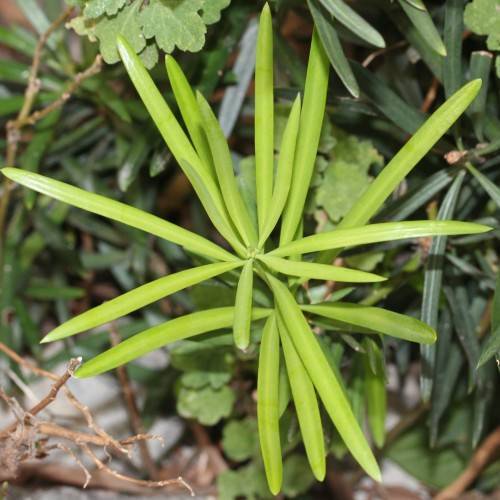
bigleaf podocarp
Podocarpus macrophyllus var. maki
Also Known As - Japanese yewCycle:
Perennial
Watering:
Average
Hardiness Zone:
7 - 9
Flowers:
Flowers
Sun:
full sun,part shade,full shade
Cones:
Yes
Leaf:
Yes
Growth Rate:
Low
Maintenance:
Low
Drought Tolerant:
Yes
Salt Tolerant:
Yes
watering
Bigleaf Podocarp plants require well-drained soil and should not be overwatered. They should be watered about once or twice a week, depending on the environment and season. During warm, dry summer months, they should be watered more frequently. During cooler, rainy seasons, it is best to reduce the frequency of watering. Provide water to the soil until it is moist but not soggy. Also, ensure that the soil is not completely dried out.
sunlight
Bigleaf podocarp (Podocarpus macrophyllus var. maki) prefers to receive an average of 6-8 hours of direct sunlight each day. The optimal sunlight depends on the climate and time of year so it is important to check the sun exposure in the area where the plant is located. In locations such as the United Kingdom or central Europe, this species will thrive in full sun from mid-spring to mid-summer before needing some protection from the most intense afternoon sunshine. In countries such as the United States, the best light occurs in morning hours with some afternoon shade. In the summer, little to no shade is recommended. In winter, a few hours of filtered sunlight per day should suffice.
pruning
Bigleaf Podocarp (Podocarpus macrophyllus var. maki) plants should be pruned once a year in late winter or early spring. Remove any dead or broken branches, and trim back overgrowth to control size and shape. Pruning should be done above a branching point, and any larger branches should be thinned out to promote air flow and reduce the risk of disease. It is best to prune small branches first and work up to the larger ones. Be careful not to prune more than a third of the foliage, as this could put undue stress on the branches and lead to further losses. Pruning should also be done with care as to avoid creating tears in the delicate leaves. After pruning, feed the plant with a balanced fertilizer to promote healthy growth.
